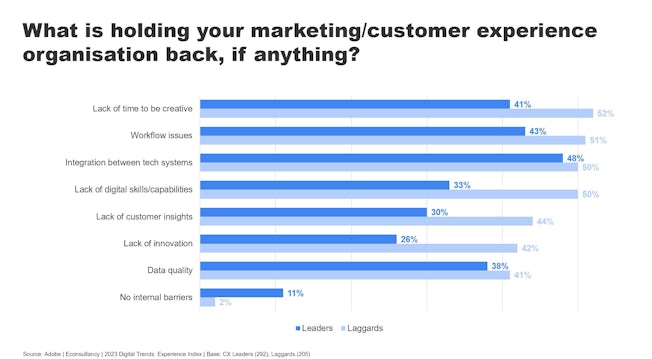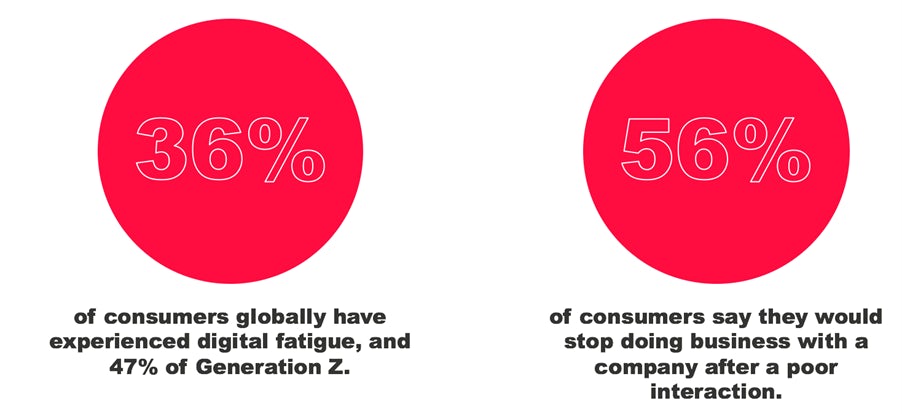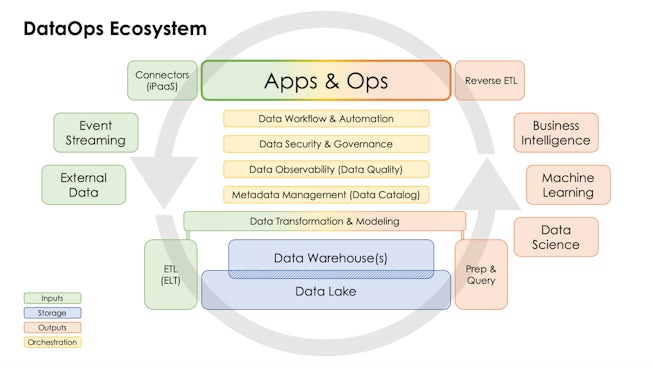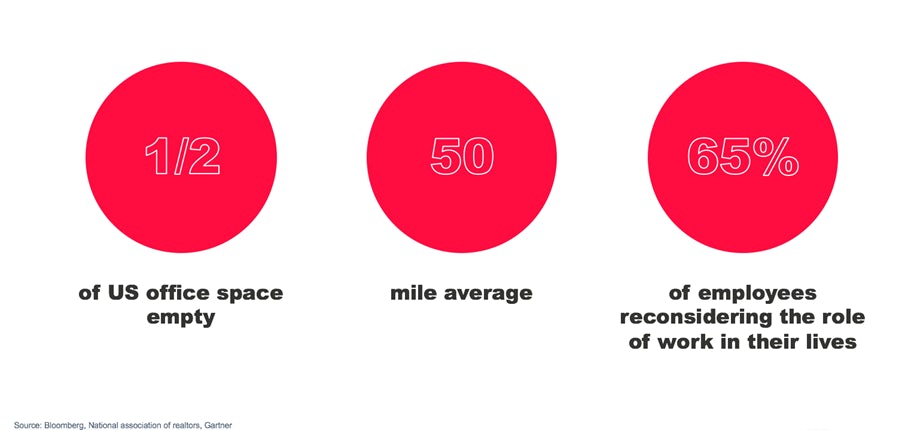What are the overarching trends that will define how marketers will think and act in 2023, and the challenges and opportunities they will face? We explore four key trends.
For some more channel-specific predictions, see our previous expert roundups on ecommerce, personalisation, retail media, influencer marketing, SEO, and social ads.
Our trends for 2023:
-
Resisting short-termism
- New privacy norms impact measurement
- Making time for creativity
-
Digital fatigue
- The enduring value of CX
- Retreat to the real world
-
A moment of truth for owned data
- Adtech repositions for first-party data
- Data skills at a premium
- Focus on CRM and loyalty
-
The augmented and empowered marketer
- More from less: automation and generative AI
- Renegotiating work
1. Resisting short-termism
Whilst speed is important and we saw during the pandemic the importance of responding to changing conditions and customer behaviour, the fastest reaction can never put a brand ahead for long. The survey also revealed that 76% of agency executives report that their clients focus on vanity metrics – clicks or likes – or quarterly revenue goals to determine success, rather than longer-term indicators such as brand saliency or customer lifetime value.
The theory of ad spend in a recession is well known to marketers; having some longer term perspective is key. Maintaining investment in campaigns during a recession, when brand advertising spend in particular drops, should see ESOV (excess share of voice) eventually filter through into market share growth.
We already saw some big pureplay brands discuss a shift in their marketing spend in late 2022. After its most profitable quarter ever, Airbnb execs praised its “efficient” approach to marketing spend and focus on brand building over performance. Asos’ CEO blamed acquisition slowdown on ‘insufficient’ brand spend. And NatWest’s B2B fintech spin-off Mettle is reinvesting in brand after ‘letting the ball drop’.
Though marketers have been wrestling with this balance of ‘short’ (often in digital performance) and ‘long’ for some time, there are newer factors pushing them to go slightly longer, or at least broader.
1.1New privacy norms impact measurement
“Interest in media mix modelling has been invigorated by new and more restrictive privacy norms…” writes Eric Seufert, mobile analyst and blogger at mobiledevmemo.com.
The App Tracking Transparency framework from Apple has made targeting and deterministic attribution (via IDFA) more difficult, particularly in the world of social media advertising. Seufert argues ATT has “created a recession within the social media advertising economy and certain other advertising-dependent categories,” with macroeconomic factors not the cause as many suggest.
Third party cookie deprecation also has an impact, with marketers preparing for Google Chrome’s eventual ban, currently slated for 2024. The result is that marketers need to make sure that as well as taking a tactical approach to increasing conversion and ROAS at a channel level, they consider media mix modelling or econometrics (read Grace Kite in Marketing Week). This may be expensive and require data science expertise, but will give a better indication of what works for the brand longer term.
As Les Binet, writes, “The rise of attribution is one of the reasons why marketing has become so short-term, annoying and ineffective.” Binet comments that Facebook and Google are pivoting away from attribution modelling towards econometrics for evaluating effectiveness.
1.2Making time for creativity
A clear message from 2023’s Digital Trends survey is that close to two thirds (62%) of senior executives agree that their organisations have become more efficient, but at the cost of time or freedom to be creative and design unforgettable experiences.
Practitioners agree, with 44% citing lack of time to be creative as a CX barrier. The challenges are even more acute for lagging organisations (those who said they had slightly or significantly underperformed their peers), with results revealing that more than half (52%) of laggard practitioners consider the lack of creative time a key internal CX barrier – making it the most-encountered impediment to customer experience.
Laggard organisations are also more likely than their leading competitors, who self-reported as having significantly out-performed their peers, to be held back by a lack of customer insights and innovation.

Amongst leaders, a lack of time to be creative ranked third (behind technology integration and workflow issues) as a barrier to great CX. Amongst laggards it was the foremost barrier.
We know Binet and Field’s analysis of IPA data found that award-winning creative campaigns made a brand’s media budget go 10 to 12 times further. Both in media and in experiences, marketers need time enough to stop chasing their tail and find some focus.
2. Digital fatigue
We have all seen the impact that the pandemic had in driving more people online. The term “Zoom fatigue” was coined in 2020 to describe the distinctive exhaustion of attending back-to-back virtual meetings, and although in-office working and in-person events have returned to an extent in 2022, many of us still spend more time using technology as we work and attend events remotely. In sectors like healthcare and banking, customers are moving to self-service online over call centres or in-person interaction.
Research by Twilio at the end of 2022 asked people, based on the previous 30 days, how they felt about this issue. Around 36% of consumers globally said they have experienced digital fatigue, which rises to greater levels for the younger generation – 47% of Generation Z.
There are a number of ways in which being online has become inexorably less serendipitous or more ‘noisy’ – behavioural advertising; algorithmic content feeds and ‘the filter bubble’; search engine UX in a world of SEO writing; cookie consent notices and other assorted pop-ups; the growth of ad networks and marketplaces; and the number of services that require users to create an account. And this is without mentioning the more pernicious side of social media such as disinformation and unrealistic standards.
According to the Twilio study, more than half of consumers (56%) in the research said they would stop doing business with a company after a poor interaction. How can marketers respond to this?

2.1The enduring value of CX
Though “‘experience’ is not a strategy,” (in the words of Nils Andersson Wimby, writing for Econsultancy) nor a quick route to differentiation, it can reduce price elasticity and increase conversion. And to those consumers who profess to suffering from digital fatigue, simplicity is the key to great CX. User researchers and UX designers have long been familiar with the principle of ‘don’t make me think’.
Understanding how your investment into customer experience contributes to customer lifetime value is pertinent to the ‘long vs. short’ debate.
Stuart McMillan, ecommerce consultant and friend of Econsultancy, comments:
“I think next year is going to have a lot of margin challenges, but I think it would be foolish to cut back on the customer experience because of that.
“…But of course, you do need to know the profit impact of the customer experience, but just think about that profit over the customer lifetime. Short termism typically only sends businesses in one direction. Good customer experience doesn’t always have to be expensive, however it invariably is when the wrong KPIs are in place or teams are poorly led.”
At Econsultancy Live last November, we heard Claire Hazle, Group Technology Director, Digital and Experience at Legal and General, expound the benefits of “a focused discovery approach” that can deliver value for customers and the business. A small, core team is responsible for looking at data such as customer ease scores and call centre insight, and then using product thinking to deliver operational efficiency and better CX. This team mapped the customer journey through the login process, and made improvements that reduced failure demand from 4.2 customer calls per 100 logins in 2020, to 0.71 calls per 100 logins in 2022.
This sort of work is nothing new, but having support from management for this approach will be invaluable in 2023.
2.2Retreat to the real world
The cold reception to Facebook’s metaverse endeavours is perhaps simple testament to the fact that, post-pandemic, we might not be ready for even more screen time. Who knows whether Apple’s upcoming mixed reality headset might yet change that in due course, but as things stand, smart brands creating great experiences on local high streets seems like a much surer bet for winning over customers.
Marks and Spencer saw strong Christmas results after attracting customers to premium products and adding more in their value range. But another aspect of their success is continued investment into stores. Shopping at an M&S Food Hall is enjoyable for the product variety and packaging but often also the store layout and design.
A brand’s ecommerce efforts can and should improve the profitability of brick-and-mortar stores – through measures such as click-and-collect, microfulfilment, and a truly joined-up approach to customer loyalty – and once these are put in place, the maxim of multichannel customers being most valuable will hold true.
3. A moment of truth for owned data
Customer retention is even more vital during an economic downturn, as marketers seek ways to reduce their acquisition costs. But efforts to build customer relationships and also get the most from media budgets are increasingly intertwined as first-party signals are adopted more widely in the targeting of online ads.
3.1Adtech repositions for first-party data
We talked about the shift to first-party data this time last year in Econsultancy’s 2022 predictions. The whole marketing industry has been talking about it, because the writing has been on the wall for some time as we await Chrome’s deprecation of third party cookies, continue to gauge the impact of Apple’s ATT framework, and witness the EU clampdown on the collection of behavioural data without transparency.
Adtech’s focus on privacy has been years in the making, but it’s still startling to see how thick and fast the first-party data solutions (and repositioning efforts) are arriving.
Here’s some that have caught the eye just this month:
- The Trade Desk announced Galileo — a new approach for advertiser first-party data activation, which will “unlock that data in a privacy-conscious manner to find new customers that share similar characteristics”. Galileo allows for integrations with CRM and CDP platforms, as well as data clean rooms, and matches audiences using Unified ID 2.0 (UID2), an identity solution pioneered by The Trade Desk and its data and publishing partners, and which Paramount has this month adopted across its streaming channels.
- Shopify Audiences can now connect with a Google Ads account, allowing merchants to “generate multiple, objective-based audiences using your store’s specific customer data”.
- Amazon has recently announced an API and user interface that allows customers who advertise with Amazon Ads to easily upload first-party signals directly from AWS into Amazon Marketing Cloud (the tech company’s clean room and measurement solution).
Data management platforms have been adapting to the post-cookie landscape by focusing on first-party publisher IDs. For example, reading a newly published LiveRamp report on addressability, the message is loud and clear in the chapter titles, which include: ‘Privacy, Personalisation and Performance in a Post-Cookie World’, ‘Future-proofing Addressability with First-Party Data’, and ‘How Partnerships Make People-Based Marketing Possible’.
In the report, Boots Omni-Media Director Ollie Shayer is quoted, saying “…We’ve basically spent the last 12 months connecting to media partners through different identity spaces, whether that’s our integration into walled gardens or testing with different forms of identifiers on the open web.”
For marketers, the name of the game is aggregating their first-party data, making it accessible and ready to activate to drive performance.
3.2Data and analytics skills at a premium
This was reflected in our Future of Marketing survey: 64% of marketers reported that they would be increasing their spending on data and insight capabilities, making these the number one spending priority for marketers.
Last year, Marketing Week’s Career and Salary Survey recognised that data and analytics skills were most in demand. And Chiefmartec.com’s Scott Brinker wrote about data-ops ecosystems, which allow marketing teams to benefit from customer data contributed by other teams such as product, distribution and customer support. Brinker called this “a bounty of behavioral insights and “marketable moments”,” with data aggregation platforms such as Snowflake and Databricks vying to take on the role of bringing together siloed data.

The DataOps Ecosystem, as visualised by Chiefmartec.com. Image: Chiefmartec
3.3Focus on CRM and loyalty
This year should see continued investment in data infrastructure, in loyalty programmes as customer insight machines, and in AI-powered CRM.
As Stuart McMillan said in Econsultancy’s ecommerce predictions for 2023, “I don’t think it has ever been more vital for businesses to look after their owned data as well as possible. That might not mean a new CRM program, but at the very least they should be conducting an audit of what they have and have a data strategy.”
This ongoing imperative to nurture owned data is perhaps most eloquently illustrated by some recent changes in leadership in retail. Julia Waldow, writing for Modern Retail, highlights how big apparel brands increasingly need direct-to-consumer expertise, and are seeking leaders with digital experience, during a tough time for the category. A notable example is Under Armour’s incoming CEO Stephanie Linnartz, who came from Marriott, a business and sector with a big focus on loyalty and customer relationships.
4. The augmented and empowered marketing team
The past decade had seen a radical increase in complexity of the marketing industry, with the proliferation of channels, the increased access to data, the emergence of new technologies all leading to an equivalent expansion in the number of the skills required of marketers or marketing team.
In fact, when Econsultancy came to map those in a landmark piece of work, we found there were 1,390 individual skills categories.
Demand for many of these skills has often outstripped the supply of hireable talent, something that led to hot competition between organisations – particularly following the digital acceleration brought about by the pandemic – resulting in the creation of a candidate’s hiring market.
The so-called ‘war for talent’ was one of Econsultancy’s key trends for last year. Now, faced with the current economic situation, we will likely see some cooling of the overheated hiring market.
Just as we saw with the Covid-19 pandemic, as the cost of living crisis begins to bite, many organisations will respond by battening down the financial hatches, which will translate into either a pausing or reduction in total hiring activity. In a perfect storm, this will coincide with increased competition for each consumer pound.
This will mean organisations’ focus will shift to getting more from less. This will have two major consequences:
- automation will come the fore
- an increased emphasis on untapped internal talent
4.1More from less: automation and generative AI
The current economic headwinds will cause organisations to look to reset costs. This will accelerate the adoption of automated technologies.
Scaling automation not only reduces costs, but improves pace and resiliency. For instance, UPS has used AI and predictive analytics to reduce their carbon footprint, delivery more reliably and cope better with shifting demand. This programme has also reportedly saved UPS an estimated $300 million in costs.
Importantly, automation frees up humans to do non rote tasks. Something that will become increasingly important as the pressure mounts to get more from the same size, or potentially smaller, teams. Contradictory to expectations, this means automation actually has a role to play in re-humanising work.
Walmart is investing in technologies that free up human employees to minimise the time they spend on monotonous and repetitive tasks, like checking inventory on the shelf or packing orders, allowing staff to spend more time to elements of the job for which they are uniquely and humanely qualified for. This has had a notable impact on employee satisfaction. According to HBR, over the last four years, the company has experienced significantly lower rate of staff churn vs. the industry norm.
Though the immediate motivation for automation may be to reduce costs and the demand on talent, it is also about what these technologies make possible. Which brings us, rather neatly, on to the biggest technology story of the end of 2022.
Augmenting marketing with generative AI
Products like OpenAI’s ChatGPT are taking technology into realms once thought to be reserved for humans – writing code, drafting articles, or homework (the New York City education department has blocked access on its networks), and rough song lyrics.
In the words of ChatGPT itself, as prompted by McKinsey & Company: “The rise of generative AI has the potential to be a major game-changer for businesses.”
For those bitten by the metaverse hype and its sinking (though perhaps not forever) into the deep trough of disillusionment, the key difference with generative AI is that use cases abound.
In 2021, Econsultancy founder Ashley Friedlein highlighted the idea of ‘The Augmented Marketer’, powered by a whole suite of AI-powered SaaS tools. The advances made in generative AI in the past two years mean that the marketer is easily able to draft or iterate some copy or imagery when short on time or resource. These models put powerful capabilities into the hands of non-technical users- including marketers.
ChatGPT applications already exist for crafting personalised marketing, social media, summarise meeting takeaways and write technical sales content. And in a move that could eventually change how more than a billion people write emails or create presentations, Microsoft has extended its partnership with OpenAI, stating it will “deploy OpenAI’s models across our consumer and enterprise products and introduce new categories of digital experiences built on OpenAI’s technology”.
Rex Woodbury, partner at Index Ventures, writes about generative AI “lowering barriers to creation”. Just as TikTok introduced “no-code-like” tools that made video creation more accessible than it had been via YouTube, now AI companies can take that a step further and take away the need to shoot. Woodbury highlights Runway, a text-to-video generator that has been used by CBS and New Balance amongst others.
Make any idea real. Just write it.
Text to video, coming soon to Runway.
Sign up for early access: https://t.co/ekldoIshdw pic.twitter.com/DCwXcmRcuK
— Runway (@runwayml) September 9, 2022
The excitement is warranted. But there are still key issues to be debated this year around copyright, accuracy and privacy – if these can be worked out, generative AI has the potential to change the day-to-day work of the marketer.
4.2Renegotiating work
We are living through one of the greatest shake-ups in work norms since the office became a part of the work landscape back in the 18th century.
The adoption of remote and hybrid working is reshaping our cities as well as how and where we live and work. As of mid-last year, more than half of US office space in major cities remained empty.
In terms of where we live, the statistics are equally stark. In the United States, adults have consistently been buying homes that were an average of 10-15 miles from their last residence. In 2022 this distance jumped to an average of 50 miles – demonstrating that people are less shackled to commute distances as a result of remote and hybrid work.
In the face of challenging economic conditions, the removal (or at least reduction) of expensive office leases from organisational P&L (profit and loss) is a hard thing to argue against, meaning we are unlikely to see the end of hybrid working anytime soon.
Alongside flexible working, we are seeing a renegotiation of the relationship between employer and employee, with 65% of employees reconsidering the role that work plays within their lives. With people increasingly looking for work that has meaning, matches their values, offers connection, and flexibility – both in terms of location but also the rhythms of work – and, importantly, supports their growth.
Though the topic of talent is often dominated by hiring, it is worth remembering that it is only one part of creating an effective team. Learning opportunities and the development of existing employees is also essential.

According to research from Bain, the fastest growing companies are often also more likely taking this internal talent first approach, seeking out and capitalising on the underutilised potential of current employees, and offering opportunities for growth across the organisational hierarchy. They are often also doing this in a way that is far more tailored to the unique needs and strengths of each individual team member.
The same research shows that incumbents often cite a lack of talent as biggest barrier to progress —a trait that defines their fast growing competitors.
We know from swathes of research that staff retention is much higher when employees have internal mobility, with opportunities for employees to fill their skills gaps to make their next internal move a key lever in this. This all means that those who actively invest in tapping into the value of internal talent through upskilling and development – in a way that suits this new hybrid work environment – will pull ahead.
They will be better equipped to respond to an age characterised by disruption and crises, to find efficiencies, and to capitalise on emerging opportunities and technologies as we move through 2023 and beyond.







